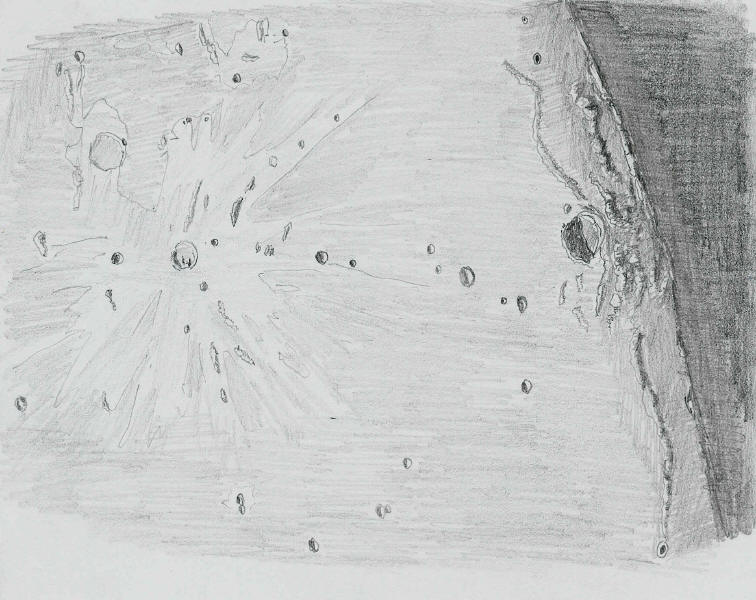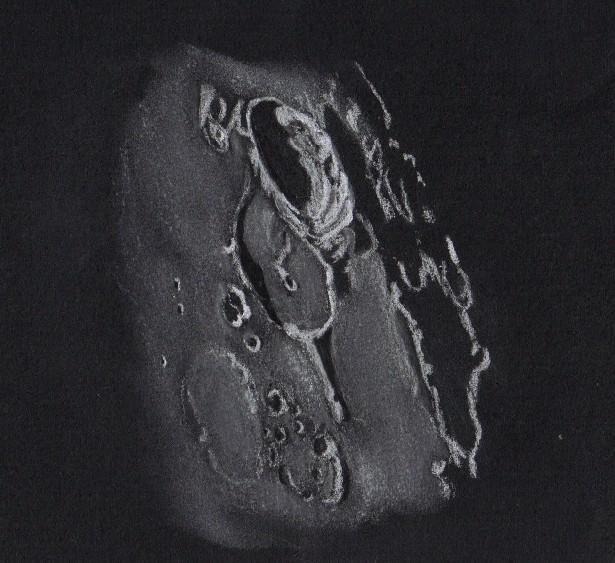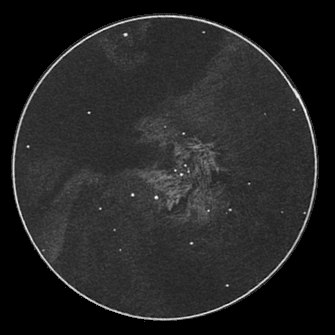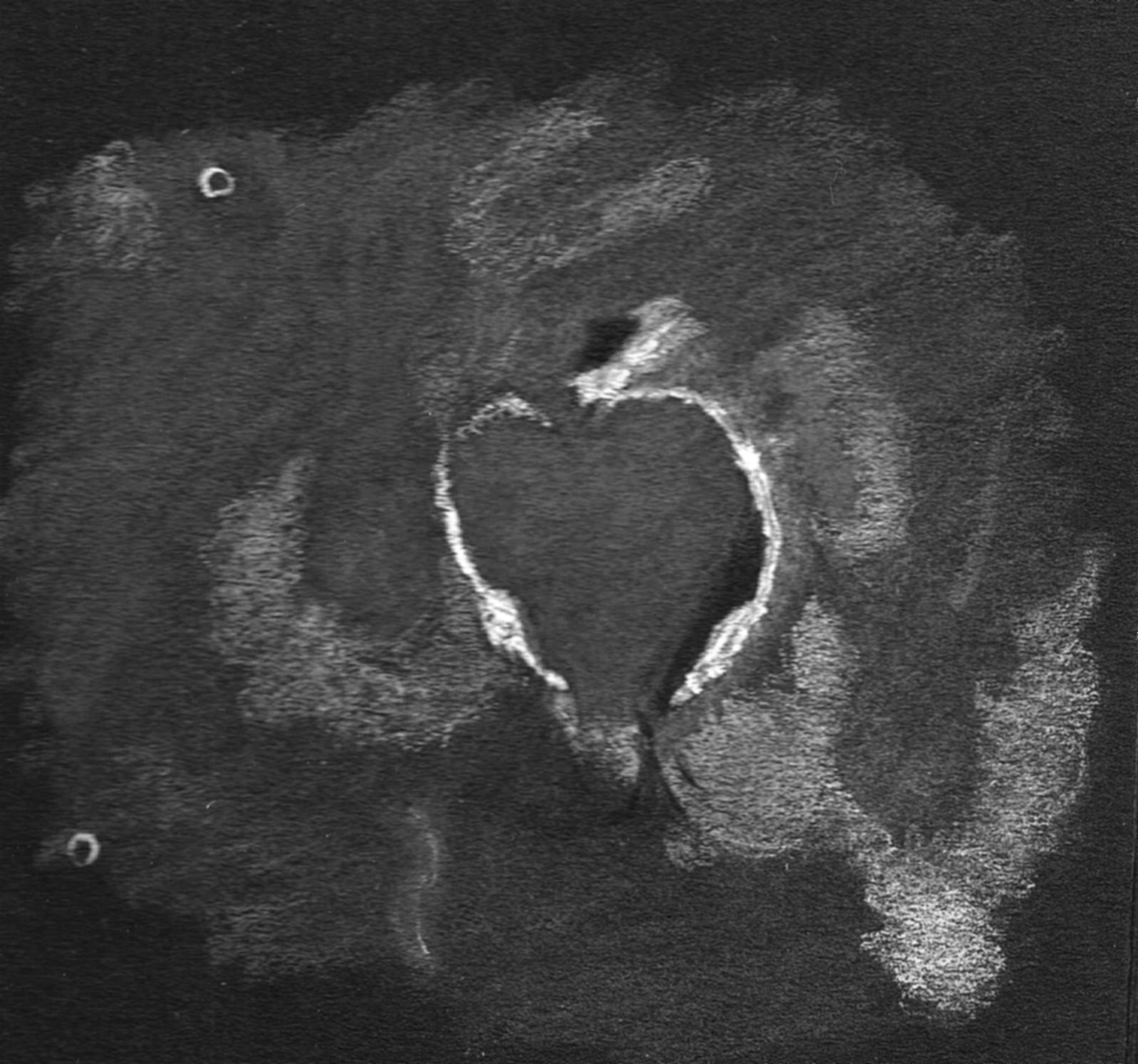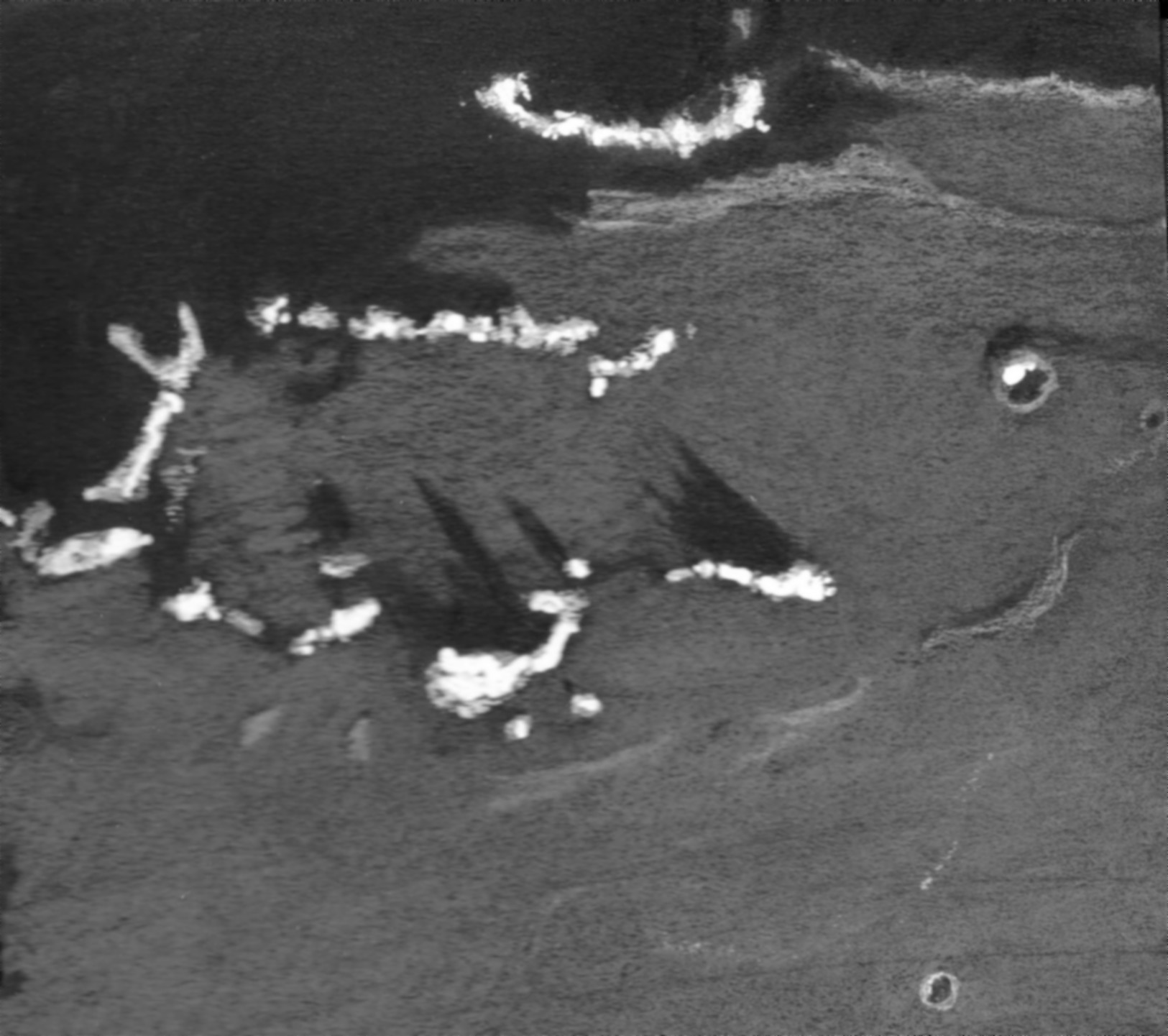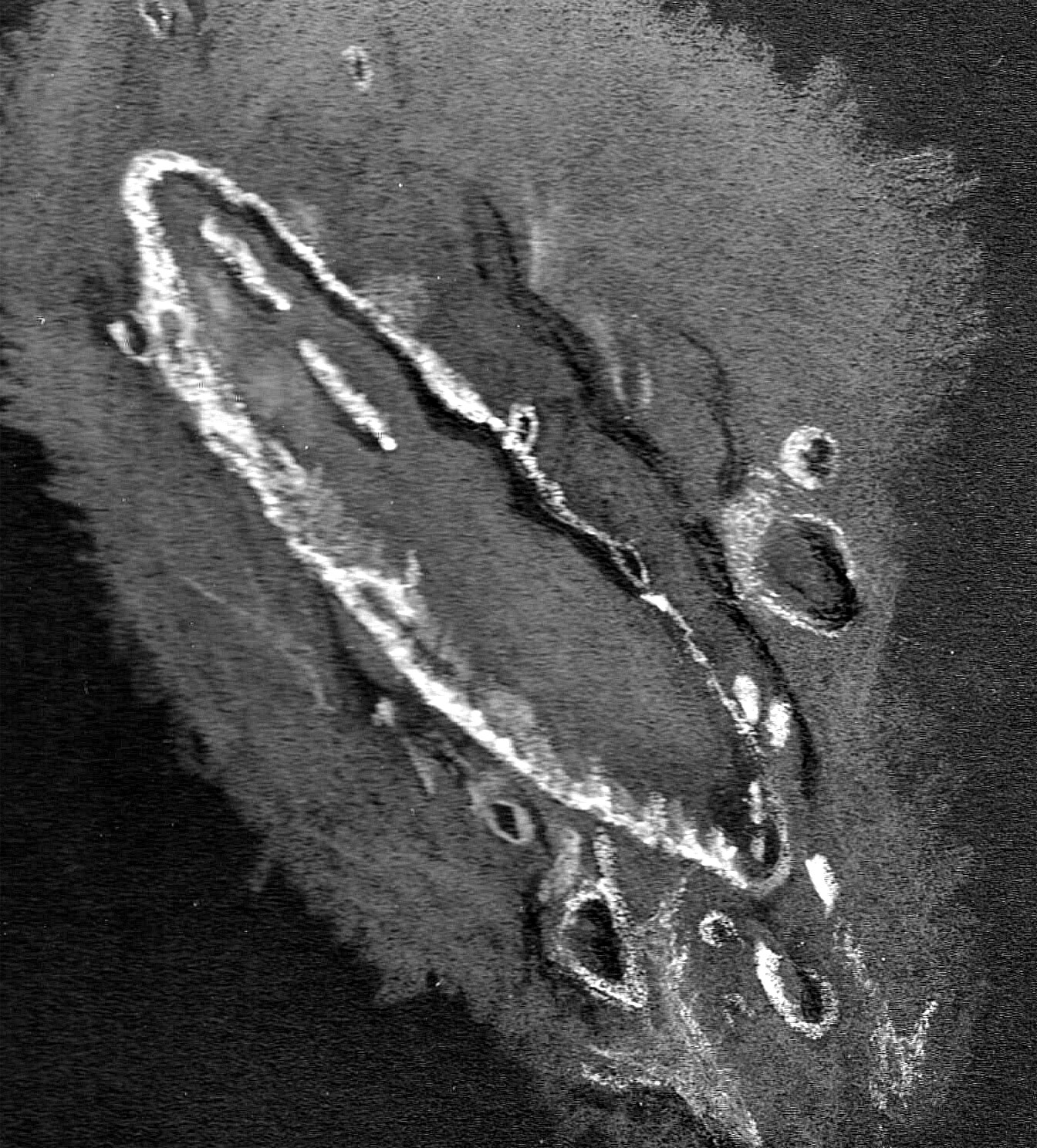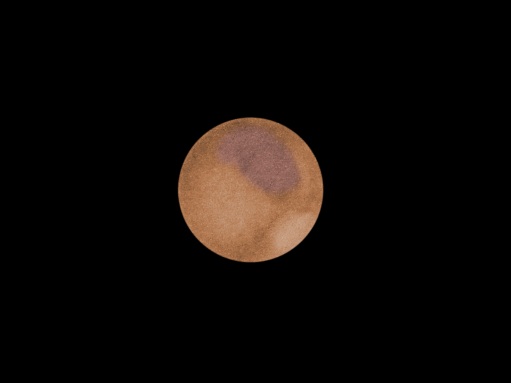
Mars – CM 3.2°
Sketch and Details by Carlos E. Hernandez
I made an observation of Mars on January 3, 2010 (06:00 U.T.) under average seeing conditions with brief moments of steadier seeing. I was unable to view the planet in blue light as clouds prevented me from doing so shortly after my IR/Magenta filter observation.
Date (U.T.): January 3, 2010
Time (U.T.): 06:00
CM 003.2* W
Ls 32.7* (Northern Spring/Southern Autumn)
De 17.7*, Ds 13.1*, phase 97%, 12.9″
Instrument: 9-inch (23-cm) F/13.5 Maksutov-Cassegrain
Magnification: 295x
Filters (Wratten) 30 (Magenta)
Seeing (1-10): 5 (brief moments of 6-7), Antoniadi (I-V) III
Transparency (1-6): 4
Notes:
The North Polar Cap (NPC) was brilliant (10/10) without any detail visible within it. A projection from the NPC is visible over it’s southern border (following the CM). Sinus Sabaeus (3-5/10) and Sinus Meridiani (3-4/10) were visible on and preceding the CM. No haze/cloud is visible over Edom (7/10) at this time. Arabia/Aeria/Eden appear bright (7/10) but no other detail is visible over these regions. Deucalionis Regio appears bright (7/10) and Pandorae Fretum appears dusky to dull (4-5/10) whereas Noachis is obscured by a very bright (8/10) Evening Limb Haze (ELH). Cecropia (and Ortygia appear dark to dusky (3-4/10). Mare Acidalium appears dark to dusky (3-4/10) and Niliacus Lacus (3-4/10) separated by a bright (7/10) haze over Achillis Pons. Margaritifer Sinus, Mare Erythraeum, and Aurorae Sinus appear dark to dusky (3-4/10) and mottled. dusky (4/10) projections are noted to extend from the northern borders of Mare Erythraeum. Chryse/Xanthe appears bright (7/10) with a faint haze over it. An extremely to very bright (8-9/10) Evening Limb Haze (ELH), Morning Limb haze (MLH), and Southern Limb Haze (SLH) are visible.
A digital image produced using Pixelmator.


